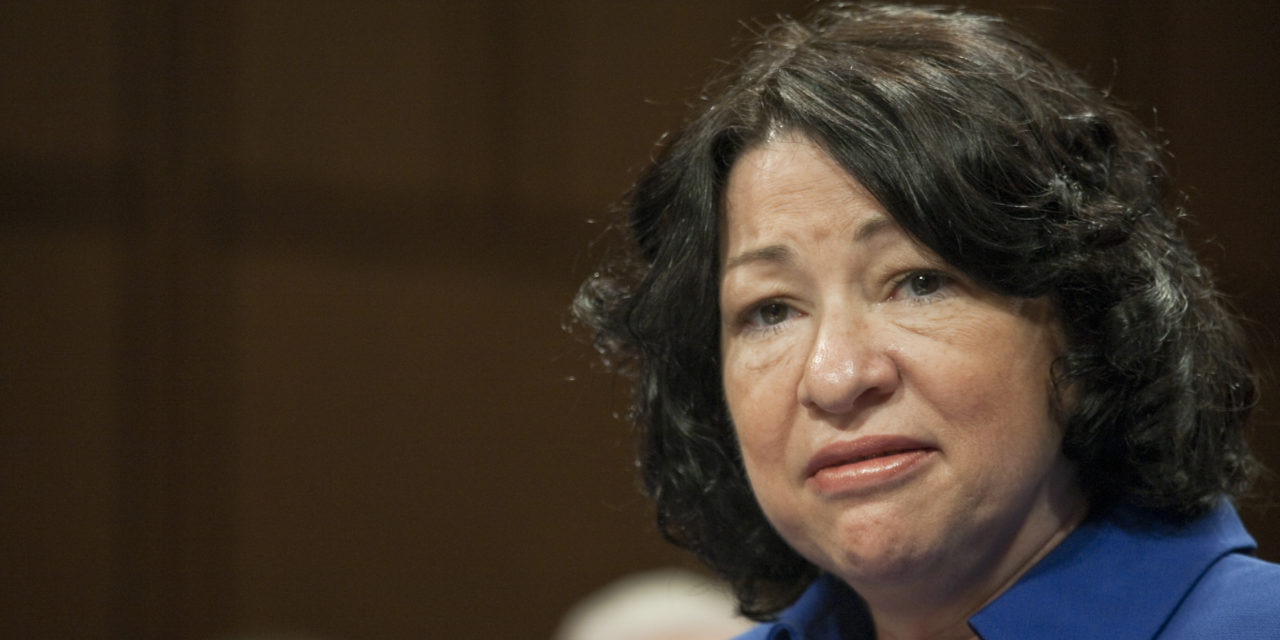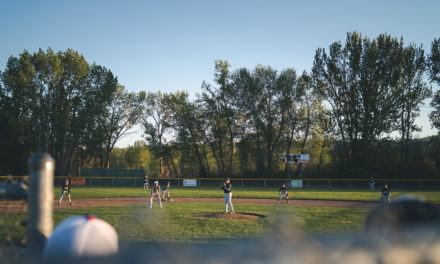Last Friday, the U.S. Supreme Court heard oral arguments in the case over the Occupational Safety and Health Administration’s (OSHA) Emergency Temporary Standard (ETS). The ETS forces employers with 100 or more employees to require their workers to be fully vaccinated against COVID-19, or mask while at work and undergo weekly testing.
Starting Monday, Jan. 10, OSHA has begun enforcing the masking requirement, but will not issue citations for noncompliance with the testing portion of the ETS until February 9.
Following oral arguments, the average American can only wait and see when and how the nine justices decide to rule. Estimates for when the court may issue a decision range from a few days to a few weeks.
But one of the main, and surprising, takeaways from Friday’s arguments was how ignorant one particular justice seemed to be about basic data regarding COVID-19. That was Associate Justice Sonia Sotomayor.
Justice Sotomayor, 67, was nominated to the high court by former President Barack Obama on May 26, 2009, and, after being confirmed 68-31 by the U.S. Senate, was sworn in as an Associate Justice of the Supreme Court on August 8, 2009.
Americans expect Supreme Court justices to be knowledgeable, well read, fair, and wise, particularly on consequential cases that impact the lives of tens of millions of people.
But on Friday, Justice Sotomayor asserted several statements about COVID-19 that are demonstrably false.
Her statements lead the conservative satire site The Babylon Bee to write the following headline: “Study Finds Supreme Court Has Now Shared More COVID Misinformation Than Your Crazy Facebook Aunt.”
With that, here are the Top Five instances of COVID-19 misinformation that Justice Sotomayor asserted.
- The Vaccine Mandate Protects Already Vaccinated Workers
Justice Sotomayor, perhaps unintentionally, questioned the efficacy of the COVID-19 vaccines, and asserted that vaccinated individuals are still at serious risk for death and illness.
Discussing who the OSHA mandate is intended to protect, Attorney Scott Keller, on behalf of the plaintiffs, told Justice Alito that OSHA has said “the grave danger here is to the unvaccinated worker who is exposed to COVID.”
But Justice Sotomayor followed up and said, “I quibble with that in part.”
“The unvaccinated worker affects other unvaccinated workers but affects vaccinated workers. We have proof of that with Omicron,” the justice said.
“And it’s not just death, but there is illness, and for many with preexisting conditions or immunological problems, there are severe consequences even when vaccinated. So I think the grave danger is to both.”
Contrary to Justice Sotomayor’s assertions, OSHA said in the ETS that “unvaccinated workers face grave danger,” and that “unvaccinated workers are much more likely to contract and transmit COVID-19 in the workplace than vaccinated workers.”
- The Vaccine Mandate Isn’t Actually a Vaccine Mandate
The OSHA ETS explicitly states that it expects “the Vaccination and Testing ETS will result in approximately 23 million individuals becoming vaccinated.”
In other words, even with the testing-and-masking option, the goal of the ETS is to coerce individuals to receive a COVID-19 vaccine.
But Justice Sotomayor disagreed with that.
“There’s no mandate here for a vaccine,” Justice Sotomayor bluntly asserted.
“There is a masking mandate, no different than there is when we tell people that if there are sparks flying in the workplace, wear — you have — workers have to be provided — have to wear a mask. So that’s no different in my mind than this. So this is not a vaccine mandate.”
- Human Beings Are Like Machines
In an eyebrow-raising exchange between Keller and Justice Sotomayor, Keller attempted to make the point that the OSHA ETS doesn’t fit with the kind of regulations that OSHA normally issues.
“What’s the difference between this and telling employers, where sparks are flying in the workplace, your workers have to be — wear a mask?” the justice asked.
“When sparks are flying in the workplace, that’s presumably because there’s a machine that’s unique to that workplace,” Keller responded.
“Why is the human being not like a machine if it’s spewing a virus, bloodborne viruses?” Sotomayor replied.
Huh?
- The Virus is Bloodborne
In the quote above, Justice Sotomayor asserted that COVID-19 is “bloodborne.”
This isn’t the case, because COVID-19 is spread through the air, according to the CDC.
This makes COVID-19 airborne, not bloodborne.
- 100,000 Children Are in ‘Serious Condition’ from COVID-19.
“We have hospitals that are almost at full capacity with people severely ill on ventilators,” Justice Sotomayor said. “We have over 100,000 children, which we’ve never had before, in — in serious condition and many on ventilators.”
To this claim, the fact checkers over at Politifact gave Sotomayor a “false” rating.
In total, from Aug. 1, 2020, until Jan. 7, 2022, there have been 84,582 children (those age 0-17) hospitalized with a confirmed case of COVID-19. Currently, there are 3,342 children hospitalized with COVID-19.
Additionally, Centers for Disease Control and Prevention (CDC) Director Rochelle Walensky recently admitted that people who are counted as a COVID-19 hospitalization are often admitted for a different reason, and then happen to test positive for COVID-19 while in the hospital.
“In some hospitals that we’ve talked to, up to 40% of the patients who are coming in with COVID are coming in not because they’re sick with COVID but because they’re coming in with something else and have had COVID or the omicron variant detected,” Director Walensky said.
The U.S. Supreme Court is the most trusted branch of the federal government according to Gallup. But the court’s image likely took a hit following last Friday’s arguments.
Yet, no matter what assertions the court may make, or what the justices may decide in a particular case, Christians are called to pray for those in government who hold authority.
“First of all, then, I urge that supplications, prayers, intercessions, and thanksgivings be made for all people, for kings and all who are in high positions, that we may lead a peaceful and quiet life, godly and dignified in every way” (1 Timothy 2:2).
Let’s pray that no matter what the high court rules, its decision may contribute towards our ability as Christians to lead peaceful, quiet, godly and dignified lives.
The case is National Federation of Independent Business v. Department of Labor, Occupational Safety and Health Administration.
Photo from Shutterstock.






